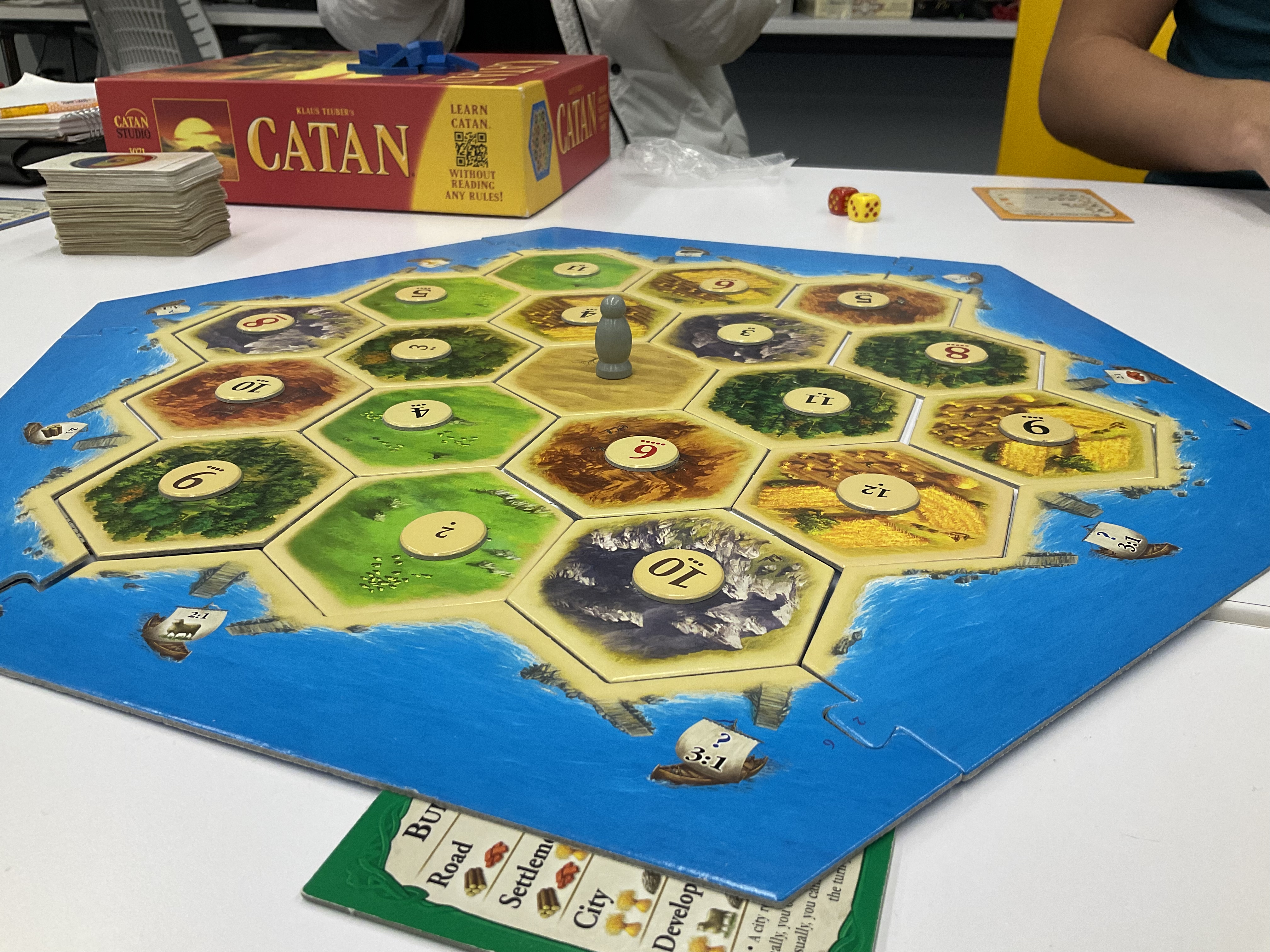Prior to my experience with Catan, hearing its name would immediately evoke a sense of fear. As a staunch video game enthusiast, I would only play board games if absolutely necessary, and Catan held a place in my mind as the pinnacle of board game culture. Standing alongside other named giants such as Monopoly and Clue, the perceived barrier to entry kept me away, ensuring that I would always suggest -quite literally- any other game.
Now, following my first game of Catan, I realize why it has made its mark within the board game world.
Settlers of Catan, released in 1995, is a multiplayer board game created by German game designer Klaus Teuber. In the game, players take on the roles of settlers, each attempting to build settlements and build roads while also trading with players and acquiring resources. To win, players gain victory points through a variety of methods, and the first to reach 10 victory points wins. Catan was immensely well received upon release, and to date it boasts 32 million copies sold.
The psychological, emotional, and intellectual aspects of the game intrigued me more than any of the playable mechanics. In all honesty, the base mechanics of the game seemed rather rudimentary. You rolled a dice to determine which plots of land would acquire resources, you had a pile of development cards to pick from that would give you some type of advantage, and you could use your resources to continue building settlements as you inched your way towards victory. Despite these basic mechanics, however, one that Catan does masterfully is seen through its incorporation of trading.
Trading automatically intertwines social interactivity with the events on the board. The process is simple: come to an agreement with another player that revolves around the exchanging of your resources. However, the systems of trading got tricky when applied with ideas of motive. Although each player needed the same amount and type of resource to construct settlements, the variable nature of the dice meant that players were dependent on one another to acquire the resources they may need. Those interactions are what truly added life to the game. Our group played in a more relaxed context, meaning when one player received a comical amount of resources, we were not at eachothers throats trying to capitalize on the sudden wealth of hay. The aspect of trading also proved important due to the LACK of explicit information regarding the trading process. There were no written rules prohibiting players from communicating, bartering, or lying, which meant each player had the agency to address trading in a specific manner. In some cases, positive relations formed from prior trades meant that when a robber was played, particular desired resources were simply offered rather than left up to blind chance.
For myself, the beauty of Catan was developed through its cognitive interactivity. The player dynamics around the table quickly shifted, ensuring that it never felt too competitive or too alienating. The nature of trading, and the space provided, meant that players would make a conscious effort to convince others to not encroach on their territory or hinder their plans. Comments such as “moving the robber to the desert ensures that he can’t hurt anyone” or “please don’t, I haven’t stolen from you at all!” provided the emotional edge that granted each settler the space for more cunning moves later on in the game. The relationships were the most enjoyable part of Catan, displacing the winning objective with one all the more valuable, the friendships made along the way.
Although I don’t see myself jumping to return to the geometric world of Catan, I can say with confidence that it has reshaped my perspective on what a board game “should” be. Using Catan to facilitate introductions between our design team proved invaluable, and I loved getting snippets of everyone’s personality spread throughout comical amounts of hay acquisition.
A huge thank you to Izzy, Monica, Noor, and Austin for making my first game a great one 🙂

